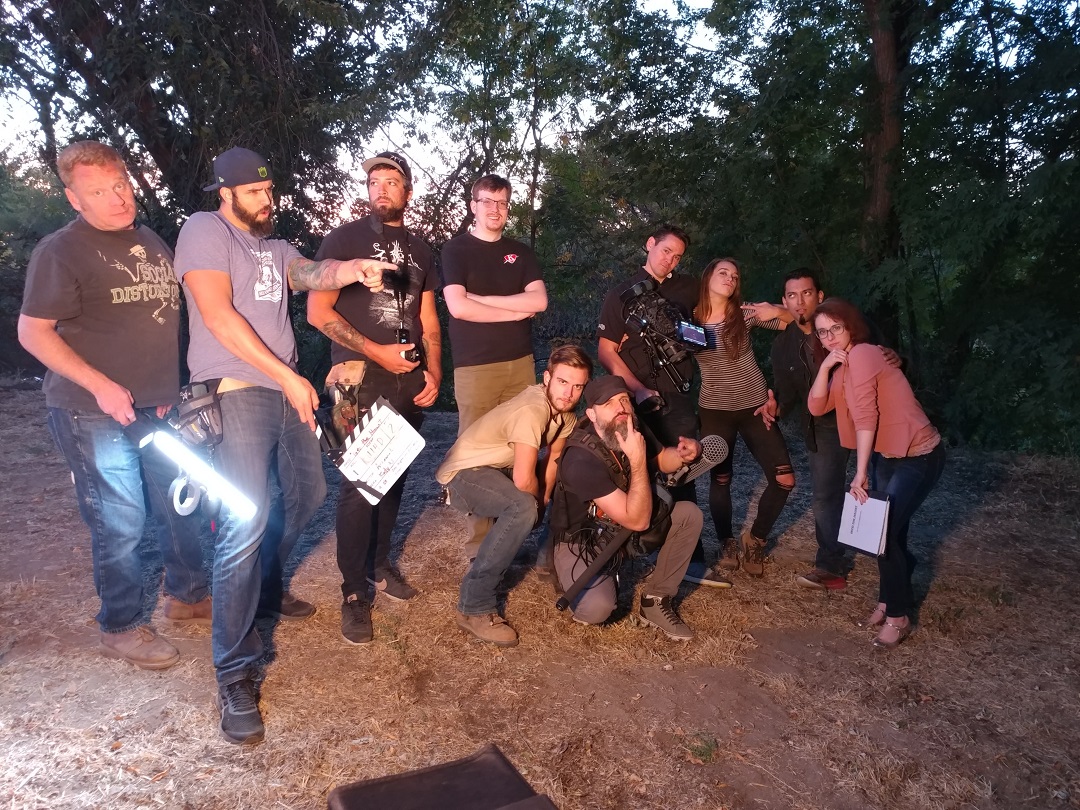
So, you’re a director or filmmaker about to embark on making your first film. You’ve got a good working script and you have broken things down into a shot list. That means you are in charge of three things: 1) Managing the production crew; 2) Directing the actors to give you the performance you want; and 3) Staying on-budget. This article concentrates on managing the production crew.
Always Feed the Film Crew Well
The first rule of thumb for managing the production crew is to make sure they are well fed. If you are budget starved, you can do what one director I know always did—hold a “crane party” (so called because they took place around the crane) and BBQ grill steaks and chicken and fish. You’ll save a lot of money over hiring a catering service and the food will likely be better. The leftovers can serve as lunch sandwiches for the next day.
If you are working on your first film, chances are your budget is not going to be large. This means your crew is likely to be small. This in turn implies that many of your crew members will need to perform what would normally be multiple job duties on a feature film shoot.
Direct Crew in Accord with Their Level of Production Experience
The first thing you need to do is to ascertain how experienced your crew is. Are they fellow students or are they crew members who’ve worked in the industry for several years? This has to do with how you work with them. Let’s say you are working with your lighting department to setup a scene. The lighting department might consist of one-person, with little or no on-set experience, who is also your camera operator. On a more elaborate set, you might have a lighting director and maybe even a grip—both of whom have a bevy of experience under their belts.
With the inexperienced lighting department one-person crew, time spent with them going over the lighting effect you’re looking to achieve, prior to the shoot will likely save you a lot of time and effort and get you closer to that desired result. Your goal here is to discuss every element of the lighting you want—from choice of lighting instruments to the positioning of them, to lighting techniques and everything in-between. The key word here is “discuss.” This means instead of telling them what to do, you offer suggestions and arrive at a mutually agreed upon plan of execution. Remember, you are the director so you have the last word, but the more you can make the crew member feel they have input the better they will respond.
With an experienced lighting director your approach needs to be modified. You want to talk less about the specifics (type of light, angle of light) and more about the mood you are trying to achieve. You should ask for their input every step of the way. If you try and tell them how to light a scene in too much detail (“I want a 2K for the key light at a 45 degree angle stationed six feet above the actor’s head, with a 1K fill light at the other 45 degree angle, and a 500 watt backlight on the same side as the key light” will get you exactly what you ordered and nothing else. Crew members can get their revenge any time they want by following your directions to the letter. A better way to go about it is to tell them the effect you want to achieve, then let them do it using their expertise. About the only bone of contention you should have working with a lighting director who’s more experienced than you would be about budget. In which case “I can’t afford HMI lights with a generator, what do you suggest as a work-around?” would be a better approach.
This advice applies to each crew position for the film you are making. You want to inspire your crew to work hard, work efficiently and have an enjoyable experience doing so. Yelling and screaming serve no purpose and often will make things worse. Patience is a virtue.
Abide by The Hierarchy
One more “rule” to consider is that film crews have a hierarchy—it’s wise to respect it. The camera operator works with the lighting director (who answers to the camera operator who answers to you.) The lighting director may have grips that work with him. It’s the lighting director’s job to tell the grip what to do, not yours.
Finally, don’t let your ego get in the way. As the director you have the “power” to tell anyone on the set what to do. Don’t abuse this or it will come back to bite you. It’s far better to ask for a suggestion, especially when you don’t know what to do, than to demand something you don’t know the answer for. The crew will respect you more, they’ll work harder for you, and this enthusiasm will carry through the entire production. Most importantly, never forget rule number one—feed your crew well.
Film Connection mentor Ron McPherson on Finding Your Way in Filmmaking
Film Connection grad Arronn Lepperman Gets Mentored, Shoots Feature in 16 Days!
Roundtable with Film Connection mentors Daniel Lir and Bayou Bennett



